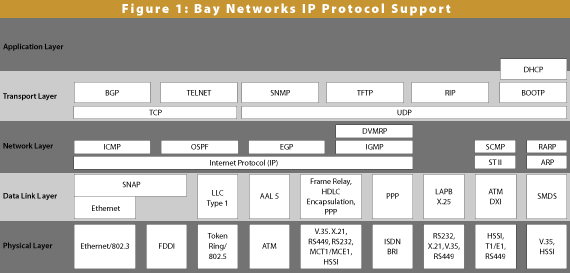TCP-IP PROTOCOLS
TCP/IP Layers

The application, presentation, and session layers are all
application-oriented in that they are responsible for presenting the
application interface to the user. These three layers are called the
upper layers.
The lower four layers deal with the transmission of data, covering the
packaging, routing, verification, and transmission of each data group.
The lower layers don't worry about the type of data they receive or
send to the application, but deal simply with the task of sending it.
-
The Application Layer
It is where the applications, such as electronic mail, USENET news
readers, or database display modules, reside. The application layer's
task is to display received information and send the user's new data
to the lower layers.
-
The Presentation Layer
The presentation layer's task is to isolate the lower layers from the
application's data format. It converts the data from the application
into a common format, often called the canonical representation. The
presentation layer processes machine-dependent data from the
application layer into a machine-independent format for the lower
layers. The presentation layer does the reverse for incoming data.
-
The Session Layer
The session layer organizes and synchronizes the exchange of data
between application processes. It works with the application layer to
provide simple data sets called synchronization points that let an
application know how the transmission and reception of data are
progressing. An error in one application is handled by the session
layer to let the receiving application know that the error has
occurred. The session layer can resynchronize applications that are
currently connected to each other.
-
The Transport Layer
The transport layer, as its name suggests, is designed to provide
the "transparent transfer of data from a source end open system to a
destination end open system," according to the OSI Reference Model.
The transport layer establishes, maintains, and terminates
communications between two machines. The transport layer is responsible
for ensuring that data sent matches the data received. This verification
role is important in ensuring that data is correctly sent, with a
resend if an error was detected. The transport layer manages the
sending of data, determining its order and its priority.
-
The Network Layer
The network layer provides the physical routing of the data, determining
the path between the machines. The network layer handles all these
routing issues, relieving the higher layers from this issue.
It is the only network layer that sends a message from source to target
machine, managing other chunks of data that pass through the system on
their way to another machine.
-
The Data Link Layer
The data link layer, according to the OSI reference paper, "provides
for the control of the physical layer, and detects and possibly
corrects errors that can occur." In practicality, the data link layer
is responsible for correcting transmission errors induced during
transmission.
-
The Physical Layer
The physical layer is the lowest layer of the OSI model and deals with
the "mechanical, electrical, functional, and procedural means" required
for transmission of data, according to the OSI definition. This is
really the wiring or other transmission form.







